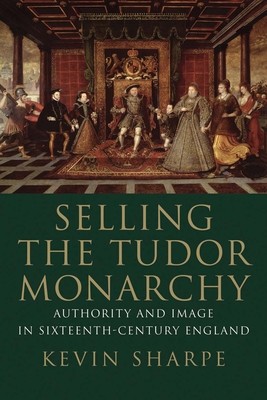
- We will send in 10–14 business days.
- Author: Kevin Sharpe
- Publisher: Yale University Press
- ISBN-10: 0300236786
- ISBN-13: 9780300236781
- Format: 15.6 x 23.4 x 3.5 cm, softcover
- Language: English
- SAVE -10% with code: EXTRA
Reviews
Description
The management of image in the service of power is a familiar tool of twenty-first century politics. In this book, a leading historian reveals how, from even before the Reformation, the Tudors sought to sustain and enhance their authority by representing themselves to their people through the media of building, print, art, material culture and speech. Deploying what we might now describe as 'spin', Tudor rulers worked actively as patrons and popularisers to present themselves to the best advantage.
Familiarity, however, brought risk. The art of royal representation was a delicate balance between mystification and popularisation, and those rulers who most used it - notably Henry VIII and Elizabeth I - enjoyed the longest reigns and, at most times, wide support. Yet even in Elizabeth's case successful image-making tended to surrender her authority to popular construction. By the end of the sixteenth-century, the Tudors had survived reformations and rebellions, strengthened the crown and imprinted themselves upon the imaginations and lives of their subjects. Yet relentless promotion of the royal image had desacralised it, leaving a difficult legacy to their Stuart successors.
Kevin Sharpe, one of Britain's leading early modern scholars, was Leverhulme Research Professor of Renaissance Studies at Queen Mary, University of London.
EXTRA 10 % discount with code: EXTRA
The promotion ends in 18d.05:39:19
The discount code is valid when purchasing from 10 €. Discounts do not stack.
- Author: Kevin Sharpe
- Publisher: Yale University Press
- ISBN-10: 0300236786
- ISBN-13: 9780300236781
- Format: 15.6 x 23.4 x 3.5 cm, softcover
- Language: English English
The management of image in the service of power is a familiar tool of twenty-first century politics. In this book, a leading historian reveals how, from even before the Reformation, the Tudors sought to sustain and enhance their authority by representing themselves to their people through the media of building, print, art, material culture and speech. Deploying what we might now describe as 'spin', Tudor rulers worked actively as patrons and popularisers to present themselves to the best advantage.
Familiarity, however, brought risk. The art of royal representation was a delicate balance between mystification and popularisation, and those rulers who most used it - notably Henry VIII and Elizabeth I - enjoyed the longest reigns and, at most times, wide support. Yet even in Elizabeth's case successful image-making tended to surrender her authority to popular construction. By the end of the sixteenth-century, the Tudors had survived reformations and rebellions, strengthened the crown and imprinted themselves upon the imaginations and lives of their subjects. Yet relentless promotion of the royal image had desacralised it, leaving a difficult legacy to their Stuart successors.
Kevin Sharpe, one of Britain's leading early modern scholars, was Leverhulme Research Professor of Renaissance Studies at Queen Mary, University of London.


Reviews